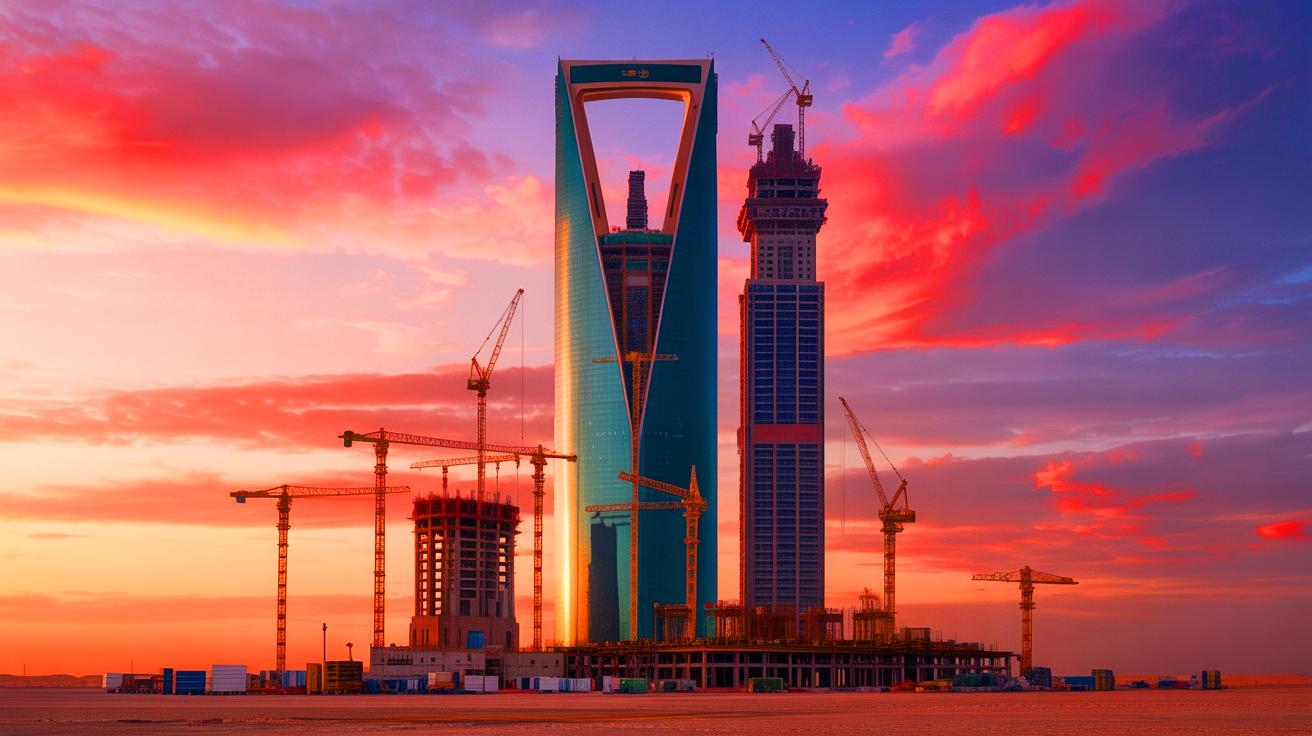- 🌍 The Jeddah Economic Company Tower is poised to become the world’s tallest skyscraper, surpassing the Burj Khalifa.
- 🏗️ Renowned architects Adrian Smith + Gordon Gill designed the tower with cutting-edge technology and sustainable practices.
- 🚀 Innovative construction techniques allow rapid progress, with completion aimed for 2028.
- 🏙️ As part of Saudi Vision 2030, the project aims to transform Jeddah into a global hub of commerce and culture.
In the heart of Saudi Arabia, an architectural marvel is rising, promising to reshape the skyline of Jeddah and claim the title of the world’s tallest skyscraper. The Jeddah Economic Company Tower, a project driven by Saudi Prince Al Waleed bin Talal Al Saud, aims to reach unprecedented heights of over 3,280 feet. This ambitious endeavor is a cornerstone of Saudi Vision 2030, reflecting the nation’s commitment to innovation and economic diversification. As construction progresses, this towering structure is expected to not only break records but also redefine the architectural landscape and signal a new era for Saudi Arabia.
The Architects Behind the Vision
The Jeddah Economic Company Tower, formerly known as the Kingdom Tower, is the creation of esteemed architects Adrian Smith + Gordon Gill. Adrian Smith, a prominent figure in the world of skyscrapers, has previously designed the Burj Khalifa, which currently holds the record for the world’s tallest building. With this new project, Smith and Gill aim to surpass their previous achievements, crafting a structure that stands as a symbol of ambition and cutting-edge technology.
The architectural design of the JEC Tower incorporates the latest advancements in technology and sustainability. Smith and Gill’s vision emphasizes harmony with the environment, featuring an aerodynamic form designed to withstand Jeddah’s desert winds. The architects have employed advanced materials and construction techniques to push the boundaries of high-rise architecture, ensuring that the tower is both an engineering marvel and a model of environmental responsibility.
The scale of this project is immense, requiring a collaborative effort from experts worldwide. The architects have assembled a team of specialists to ensure that every detail of the tower is executed with precision and excellence. This global collaboration highlights the project’s significance and its potential impact on the future of architectural design.
Construction Challenges and Innovations
Building a skyscraper of this magnitude presents numerous challenges, and the JEC Tower has faced its share of obstacles. Initial construction was delayed due to financial and logistical issues, but the project is now progressing rapidly. The construction team’s innovative techniques have enabled a remarkable pace, with a new floor being completed every four days.
An essential aspect of this rapid construction is the ability to pump concrete to unprecedented heights. Currently, concrete can be pumped up to 2,624 feet, but the team is working to extend this capability to meet the tower’s final height of over 3,280 feet. This requires state-of-the-art machinery and meticulous planning to ensure the tower’s structural integrity.
The project’s success relies heavily on integrating advanced engineering solutions to overcome the challenges of building the world’s tallest tower. This emphasis on innovation underscores the importance of technological advancement in achieving architectural feats of this scale.
A Vision for the Future
The JEC Tower is more than just a building; it is the centerpiece of a larger urban development project aimed at transforming Jeddah into a global center for commerce and culture. The tower will feature 157 floors, including luxury hotels, high-end residences, and expansive office spaces. It will also boast the world’s highest observation point, offering unparalleled views of the surrounding area.
Phase one of the development includes essential infrastructure such as hospitals, schools, and universities, along with housing for up to 100,000 people. This ambitious endeavor aligns with Saudi Vision 2030, which seeks to diversify the kingdom’s economy and reduce its reliance on oil. By investing in urban development and infrastructure, Saudi Arabia aims to establish itself as a leader in innovation and sustainability.
The JEC Tower’s significance extends beyond its height; it symbolizes the nation’s aspirations and its commitment to creating a prosperous future. As a beacon of innovation, the tower is poised to have a lasting impact on the global architectural landscape.
The Road Ahead
The completion of the JEC Tower is targeted for 2028, a timeline that supports the broader objectives of Saudi Vision 2030. While delays are always a possibility with projects of this scale, the tower’s importance to the kingdom’s future ensures its prioritization. As construction advances, the international community eagerly anticipates the tower’s unveiling.
The JEC Tower represents a new era for Saudi Arabia, symbolizing the nation’s dedication to progress and sustainable development. Its towering presence and innovative design are set to make it a global icon, inspiring future generations to pursue ambitious goals. As the world watches this monumental project unfold, one question arises: How will the completion of the JEC Tower influence future urban development on a global scale?
This article is based on verified sources and supported by editorial technologies.
Did you like it? 4.5/5 (24)
